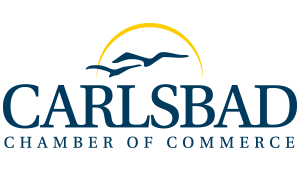There was a time when chicken coops were more common in backyards than gas grills and lawn chairs are today. Back then people knew the original meaning of the term 'nest egg.' To coax a hen to start laying eggs in the hen house, you simply placed an egg in her nesting box. Soon afterward, more eggs would accumulate.
Building up your financial assets for retirement works in a similar way. The contributions you make to your retirement plans and personal accounts will accumulate to form an attractive nest egg. Over time, your investments should generate earnings and reap the benefits of compound growth.
The responsibility for retirement funding has largely shifted from employers to individuals in recent years with the decline in employer-funded pension plans and health benefits. It is critical to save, invest and grow both retirement plans and personal assets to assure adequate income for fulfilling, longer lives, while anticipating the added burden of escalating health care and long-term care costs.
However recent surveys point out that a majority of individuals are misjudging the number of years they will live in retirement and just how big that nest egg will have to be to meet those needs. For a couple retiring at age 65, it is likely at least one of them will live into their 90s. The U.S. Census reports there are 84,000 centenarians — a number projected to grow to 580,000 by 2040. Many retirees will have parents who could need income assistance for their unexpected longevity.
Each account being invested for retirement must be viewed in context of the overall assets owned in your burgeoning nest egg to assure an appropriate balance. Your assets should be properly allocated and invested only after a thorough review of your personal goals and needs — not only for now, but way into the future.
Over recent volatile times, we have learned the importance of overseeing these accounts after making the initial investment allocations. It is prudent to monitor the periodic reports that track the investment performance, examining returns over short and long periods of time. However, when reviewing your year-to-year figures, recognize that both your contributions and investment returns build your balances, and calculate your performance accordingly. Then compare those results to peer investments with similar objectives and comparable market indices. Keep in mind that a market index isn't subject to operating expenses.
Professional financial life planning and investment management should be considered in this increasingly complex environment to assure your planning is on course for a successful retirement. Prudent planning will give you peace of mind when it is time to crack open that nest egg.
Building up your financial assets for retirement works in a similar way. The contributions you make to your retirement plans and personal accounts will accumulate to form an attractive nest egg. Over time, your investments should generate earnings and reap the benefits of compound growth.
The responsibility for retirement funding has largely shifted from employers to individuals in recent years with the decline in employer-funded pension plans and health benefits. It is critical to save, invest and grow both retirement plans and personal assets to assure adequate income for fulfilling, longer lives, while anticipating the added burden of escalating health care and long-term care costs.
However recent surveys point out that a majority of individuals are misjudging the number of years they will live in retirement and just how big that nest egg will have to be to meet those needs. For a couple retiring at age 65, it is likely at least one of them will live into their 90s. The U.S. Census reports there are 84,000 centenarians — a number projected to grow to 580,000 by 2040. Many retirees will have parents who could need income assistance for their unexpected longevity.
Each account being invested for retirement must be viewed in context of the overall assets owned in your burgeoning nest egg to assure an appropriate balance. Your assets should be properly allocated and invested only after a thorough review of your personal goals and needs — not only for now, but way into the future.
Over recent volatile times, we have learned the importance of overseeing these accounts after making the initial investment allocations. It is prudent to monitor the periodic reports that track the investment performance, examining returns over short and long periods of time. However, when reviewing your year-to-year figures, recognize that both your contributions and investment returns build your balances, and calculate your performance accordingly. Then compare those results to peer investments with similar objectives and comparable market indices. Keep in mind that a market index isn't subject to operating expenses.
Professional financial life planning and investment management should be considered in this increasingly complex environment to assure your planning is on course for a successful retirement. Prudent planning will give you peace of mind when it is time to crack open that nest egg.
